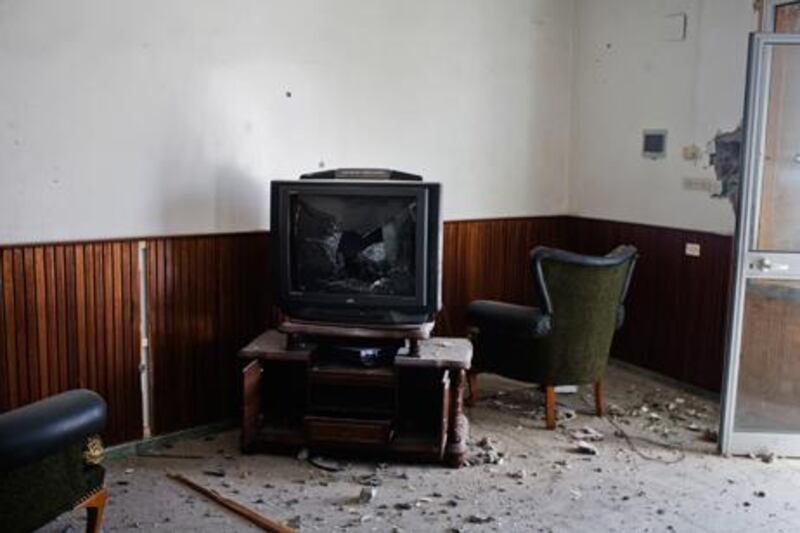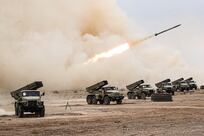The story of Guy Martin, a young British photographer with a blossoming reputation, could easily have become one of the lost tales of the Libyan conflict.
On April 20, Martin was one of a group of four photojournalists working in Misurata as the Libyan revolution began to unravel.
Martin, 28, had arrived in the country a month earlier after a period spent photographing the uprisings in Egypt. He travelled with the encouragement of Panos, the agency that represents his work, and some support from a Ferdinand Zweig scholarship from the University of Falmouth, where he is also a guest lecturer, that, he says, "afforded him the luxury of working at my own pace and looking for slower pictures, rather than just chasing the news of bombs and bullets. To be honest, I preferred it that way".
Nevertheless, he began to file photos to two British newspapers and was commissioned by the UN Refugee Agency to record the distribution of non-food items - such as tents and supplies - to African migrants who were waiting to be evacuated as the fog of war gathered. Martin would later confide: "I actually never got round to doing that assignment. I ended up doing what I was doing."
And what he "was doing" was working with Tim Hetherington, Chris Hondros and Michael Christopher Brown.
Their work and their existence would be assaulted by three 82mm mortars fired from distance, an attack that would claim the lives of both Hetherington and Hondros - widely regarded as two of the finest war photographers of their generation - and wounded Brown and Martin, who suffered serious stomach and leg injuries.
"On the day of the accident," Martin recalls, "we had gone out and had been photographing rebels on Tripoli Street as they fought street by street, alley by alley. We were there with a small group of men who were trying to clear Qaddafi's soldiers from the house opposite us. They were so close, they were firing into our building's stairwell."
Qaddafi's forces would launch their fatal attack in the afternoon, the photographs you see here are some of the images Martin took in the minutes, hours and days leading up to his serious injury.
He was treated first in Misurata, where mortars and rockets were landing all around the hospital he lay in, before being put onto a small cargo boat bound for Malta. The drama would not end there, the ship was attacked as it sailed out of Libyan waters. Eventually, he reached the island republic. He would spend three weeks in hospital there (the first in intensive care), before being returned to the United Kingdom, where he would reside for a further two weeks in the Royal Cornwall Hospital, Treliske.
Martin hopes his body of work "gives a wider interpretation and a different angle to news pictures".First and foremost, he says, he is "a documentary photographer. I hope you can see that I was just trying to bring something fresh and different to the Libyan coverage. Yes, the situation was really bad, but I hope that I tapped into some sense of how people went about their daily lives in extraordinary circumstances".
The Review first made contact with Martin earlier this year, when Polly Fields, a journalist and Martin's girlfriend, acted as intermediary, sitting with him at his hospital bed, recording his answers to the questions we posed and dutifully sending those replies back to us.
In the months afterwards we'd make occasional enquiries about Martin's journey towards full recovery, but the moment never seemed quite right to publish either his answers or his images. The situation remained too fluid as the names of Misurata and Benghazi gave way to Sirte and Tripoli. Martin's story risked being lost in the haze of uncertainty that hung over Libya.
That state of affairs changed last Thursday as NTC forces began to chase the conflict to a conclusion. We contacted Martin to find out how he was, exactly six months after he had sustained his injuries. We felt the time was finally right to tell his story, to show his pictures.
In the minutes between our message finding its way to Martin's inbox and his reply coming back, rumours began to circulate and then harden concerning Muammar Qaddafi's fate. Martin's response landed shortly afterwards.
"Thanks for getting in touch," he wrote, "Yes, it has been six months to the hour since the blast happened. And a little coincidence on my part that Qaddafi was killed today. Many, many thoughts going through my head now, but none more so than to the Libyan people who can now draw a line under this violent period in their lives and look forward to the new country they are going to build.
"I'm doing OK. Well, my surgeons all think I'm doing great for the time period since it happened. But I always think I can do better and push myself to get better, quicker and stronger than I was before."
For Martin, as for the Libyan people whose fate he documented, resolution seems close at hand. His pictures record a few steps on that journey.
Nick March is editor of The Review.






